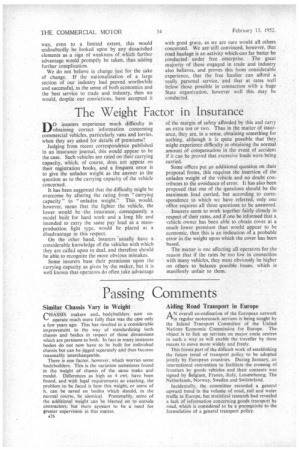The Weight Factor in Insurance
Page 28

If you've noticed an error in this article please click here to report it so we can fix it.
DO insurers experience much difficulty in obtaining correct information concerning commercial vehicles, particularly vans and lorries, when they are asked for details of premiums?
Judging from recent correspondence published in an insurance journal, this would appear to be the case. Such vehicles are rated on their carrying capacity, which, of course, does not appear on their registration books, and a frequent error is to give the unladen weight as the answer to the question as to thecarrying capacity of the vehicle concerned.
It has been suggested that the difficulty might be overcome by altering the rating from "carrying capacity" to "unladen weight." This, would, however, mean that the lighter the vehicle, the lower would be the insurance, consequently a model built for hard work and a long life and intended to carry the same pay load as a massproduction light type, would be placed at a disadvantage in this respect.
On the other hand, insurers "usually have a considerable knowledge of the vehicles with which they are called upon to deal, and therefore should be able to recognize the more obvious mistakes.
Some insurers base their premiums upon the carrying capacity as given by the maker, but it is well known that operators do often take advantage of the margin of safety afforded by this and carry an extra ton or two. Thus in the matter of insurance, they are, in a sense, obtaining something for nothing, although it is quite possible that they might experience difficulty in obtaining the normal amount of compensation in the event of accident if it can be proved that excessive loads were being carried.
Some offices put an additional question on their proposal forms, this requires the insertion of the unladen weight of the vehicle and no doubt contributes to the avoidance of error. It has also been proposed that one of the questions should be the maximum load carried, but according to correspondence to which we have referred, only one office requires all three questions to be answered.
Insurers seem to work together fairly closely in respect of their rates, and if one be informed that a vehicle owner has been able to obtain cover at a much lower premium than would appear to be economic, then this is an indication of a probable error in the weight upon which the cover has been based.
The matter is one affecting all operators for the reason that if the rates be too low in connection with many vehicles, they must obviously be higher on others to balance possible losses, which is manifestly unfair to them.




















































































